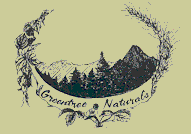 |
 |
 |
 |
 |
 |
 |
 |
 |
 |
|
Greentree Naturals CSA Newsletter - September 12, 2007Fresh from the Garden NewsIf you picked up the Saturday Daily Bee, you read about Prancing Pony farm and the Farmers Market. Great to have the front page of the newspaper talking about the farmers market and CSA’s, other than the fact that the writer called CSA’s Consumer Supported Agriculture, which is NOT what this program is about! CSA stands for Community Supported Agriculture. Community is a quite different concept. Your involvement with this CSA is all about your community which includes your local food system. Community is very much about the food that you eat! I just had to mention the papers commentary from last Saturday. Most of the article was good though. Our farmers market has grown tremendously since its inception. This marks my 17th year of selling there and it has been a delight. The market ends the second week of October. I wanted you to know how long you have for stocking up with winter produce from the market. As we count down to the end of the season (you have ONE more delivery!), it is time for you to think about life after your CSA. We will all be returning to the produce section of our favorite grocery store for the winter. I encourage you to continue eating organic and supporting local when possible. Winter Ridge is very supportive of local farmers and only sells organic produce. This is where we shop in the winter for vegetables. If you want to freeze or can veggies for the winter, come to the farmers market! We will have some winter storage vegetables like winter squash, potatoes, onions, shallots, and garlic and other farmers may have an assortment of winter vegetables for sale as well. What's in the Bag
RecipesBeets VinaigretteWith beets vinaigrette on hand you can concoct a variety of salads. In Europe, beets vinaigrette is on most salad plates in the restaurants.
Mash garlic and salt together. Stir in vinegar and mustard. Gradually beat in oil. Grind on pepper. (Makes 2/3 cup—enough for salad for 10-12) Lemon Vinaigrette Sauce: Grated Sauteed BeetsThis recipe is simplicity itself; Grate peeled or small, unpeeled raw beets and you’re set to cook. The beets retain a slight crunch and all of their basic flavor.
Wash, peel, and coarsely grate beets. In a covered frying pan, melt butter, add beets, and stir to coat with butter, then sprinkle with lemon juice to taste. Cover and cook over medium to low heat for approximately 10 minutes, checking occasionally to see that the beets don’t burn. You could add a few spoonfuls of stock or water to prevent sticking. Cook just until tender, then season with salt, pepper, and additional lemon juice if needed. Sprinkle with dill or parsley. (serves 4) You can also cook beets before grating, or use left over cooked beets with this recipe. Grate other vegetables, such as cabbage, carrots, and parsnips, cook separately, and arrange in mounds on a vegetable platter. The colors are lovely and good to eat! Same Day Beet RelishThis simple relish can be eaten on the same day it’s prepared.
Coarsely grate beets and mix with horseradish. Beat together the mustard, sugar, salt, pepper, and vinegar and mix with the beets. Fold in the yogurt or sour cream. Serve cold. (Makes about 2 cups) Aunt Pat's Summer SaladThis salad my sister-in-law made for us thirty years ago is still a summer favorite at our house.
Peel, seed, and chop the cucumbers. Wash and chop the summer squash. Toss cucumbers and squash with 2 teaspoons salt and 1/4 cup vinegar. Allow to sit for 30 minutes. Meanwhile, peel, seed, and chop the tomatoes. Drain the cucumbers and squash and toss with the tomatoes and onions. Add vinegar and oil to taste, season with salt and pepper, and toss with mint and parsley LeeksLeeks look like large, flat-leaved scallions, and can seem rather intimidating. In the US, leeks are usually eaten as a delicacy at a high class restaurant rather than prepared at home. However, it’s worth the effort to learn to cook with leeks. Despite their majestic looks, they are easy to use, and rather delicate, irreplaceable flavor makes a meal special. The subtle, buttery taste of leeks imparts elegance to many dishes, including old standbys that call for onions. Caramelized Leek Salad
1. Toast the walnuts in a dry, heavy skillet over high heat until they start to brown. Immediately transfer the nuts to a dish to cool. Chop the nuts. 2. Heat the butter and 1 tBS of oil in a large skillet over med-low heat. Add the leeks; cook, stirring occasionally, until they are deep golden color, about 45 minutes. Drain and cool. 3. In a large bowl, toss the salad greens with the salt and pepper to taste. Add the balsamic vinegar and toss; add the remaining olive oil and toss again. Divide the greens amoung four plates; sprinkle with the caramelized leeks and toasted walnuts. Arrange pear slices on the leeks. Sprinkle with cheese. Simplicity is the ultimate sophistication.
|
2003 Rapid Lightning Road, Sandpoint, Idaho 83864 • 208-263-8957 • info@greentreenaturals.com
Site Design by Logical Expressions, Inc.

